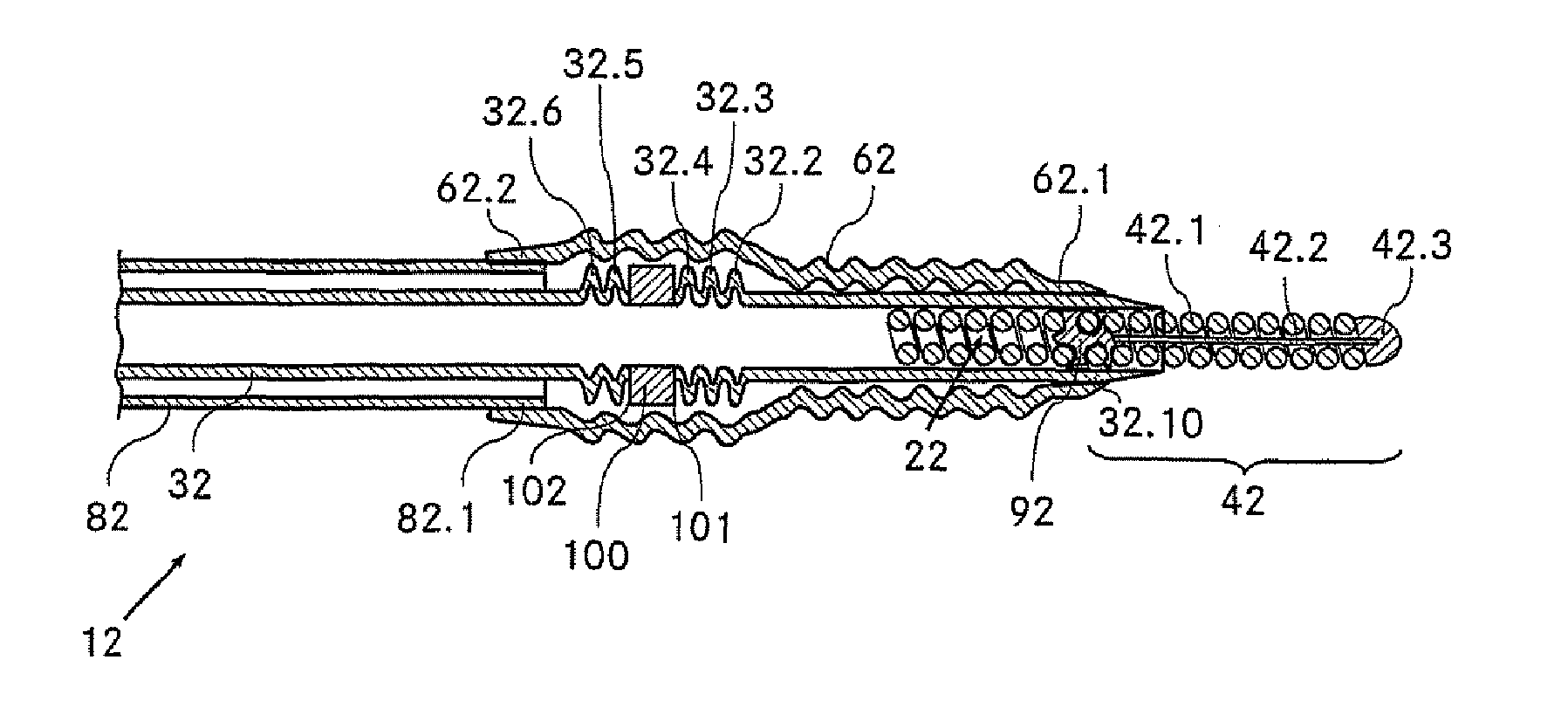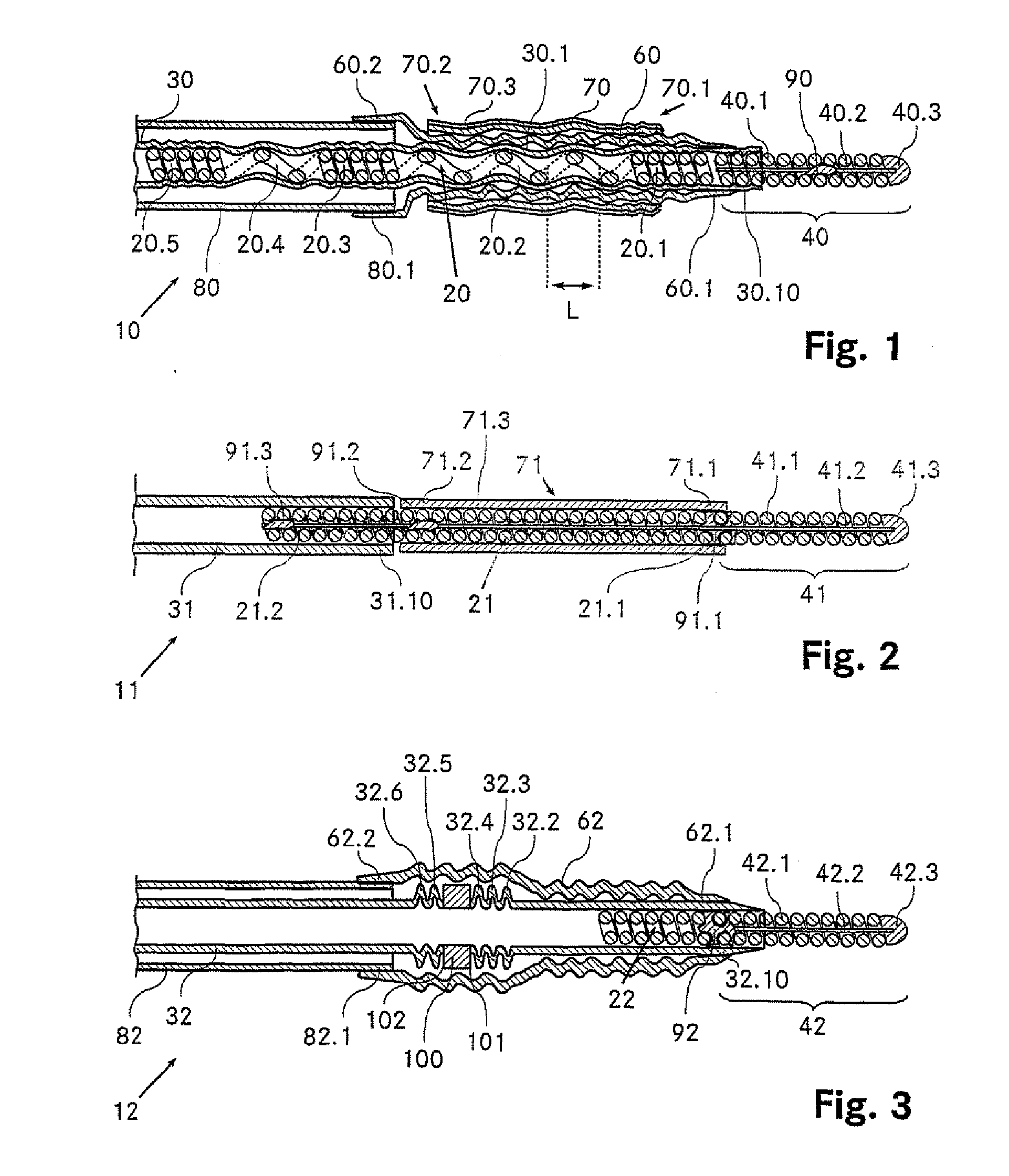Catheter
a catheter and hollow body technology, applied in the field of catheters, can solve the problems of large external inability to arbitrarily reduce the diameter of the catheter, and the difficulty of insertion, so as to improve the elasticity and flexibility of the hollow shaft, and improve the ability to insert such a catheter
- Summary
- Abstract
- Description
- Claims
- Application Information
AI Technical Summary
Benefits of technology
Problems solved by technology
Method used
Image
Examples
Embodiment Construction
[0006]It is therefore an object of the invention to develop a catheter belonging to the aforementioned technical field, which catheter can be inserted into hollow organs of humans or animals in an improved fashion.
[0007]The solution to the object is defined by the features of claim 1. In accordance with the invention, a wire helix is arranged in the encased region.
[0008]In this context, a wire helix is understood to be a hollow-cylindrical structure formed by a wire wound around a longitudinal axis in a helical fashion.
[0009]Surprisingly, it was found that the external diameter of the catheter could be reduced within the encased region by using a wire helix without the buckling stability of the catheter being adversely affected by this. Since the wire helix has high flexibility in both a longitudinal direction and transverse direction compared to a tube or tubule of the same diameter, the wire helix only adversely affects the flexibility of the catheter in an insignificant fashion. ...
PUM
| Property | Measurement | Unit |
|---|---|---|
| Diameter | aaaaa | aaaaa |
| Diameter | aaaaa | aaaaa |
| Length | aaaaa | aaaaa |
Abstract
Description
Claims
Application Information
 Login to View More
Login to View More - R&D
- Intellectual Property
- Life Sciences
- Materials
- Tech Scout
- Unparalleled Data Quality
- Higher Quality Content
- 60% Fewer Hallucinations
Browse by: Latest US Patents, China's latest patents, Technical Efficacy Thesaurus, Application Domain, Technology Topic, Popular Technical Reports.
© 2025 PatSnap. All rights reserved.Legal|Privacy policy|Modern Slavery Act Transparency Statement|Sitemap|About US| Contact US: help@patsnap.com


